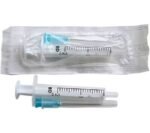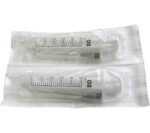Syringe and Needle: Uses, Types, Sizes, Safety Tips, and More
Syringe and needle is essential medical devices used for administering medications, vaccines, and other substances via injection. This comprehensive guide will provide insights into the uses, types, sizes, safety tips, and considerations for syringes and needles.
What are Syringes and Needles?
Syringes and needles are medical instruments designed for injecting fluids into or withdrawing fluids from the body. They consist of:
- Syringe: A plastic or glass cylinder with a plunger used to draw up and expel fluids. Syringes come in various sizes, ranging from 1 mL to 100 mL, depending on the volume of fluid to be administered.
- Needle: A hollow, sharp-ended tube attached to the syringe, used to penetrate the skin and deliver fluids into the body. Needles vary in gauge (thickness) and length, depending on the injection site and the viscosity of the fluid.
Types of Syringes
- Luer-Lock Syringes: These syringes have a threaded tip that securely twists onto the needle, preventing accidental detachment during use.
- Slip Tip Syringes: These syringes have a smooth, non-threaded tip that slides onto the needle. They are easier to attach but may be less secure compared to Luer-lock syringes.
Types of Needles
- Gauge (Thickness): Needles range in gauge from 18 (thickest) to 30 (thinnest). Thicker needles are use for viscous fluids or intramuscular injections, while thinner needles are suitable for subcutaneous injections.
- Length: Needle lengths vary from 0.5 inches to 3 inches. Shorter needles are typically use for subcutaneous injections, while longer needles are use for intramuscular injections.
Uses of Syringes and Needles
Syringes and needles are use in various medical settings for:
- Medication Administration: Injecting medications, vaccines, and fluids into the body.
- Blood Draws: Withdrawing blood for diagnostic testing.
- Insulin Injections: Managing diabetes by administering insulin.
- Allergy Testing: Intradermal injections for allergy testing.
- Hormone Injections: Administering hormones such as testosterone or growth hormone.
Safety Tips
- Single Use: Syringes and needles are typically single-use devices. Discard them after each use to prevent contamination and infections.
- Sterile Technique: Always use sterile syringes and needles to reduce the risk of infections.
- Proper Disposal: Dispose of used syringes and needles in puncture-proof containers designated for medical waste disposal.
- Storage: Store syringes and needles in a clean, dry place away from direct sunlight and extreme temperatures to maintain sterility.
Considerations for Choosing Syringes and Needles
- Volume Requirements: Select syringes base on the volume of medication to be administer. Use smaller syringes for precise measurements.
- Injection Site: Choose needle gauge and length based on the injection site and the viscosity of the fluid.
- Patient Comfort: Consider the patient’s comfort and tolerance when selecting needle size and type.
Conclusion
Syringes and needles play a crucial role in healthcare, facilitating the safe and effective administration of medications and fluids. Understanding the different types, sizes, and safety considerations is essential for healthcare providers and patients alike. Always prioritize sterile practices, proper disposal, and patient comfort when using syringes and needles.
For further information and guidance on using syringe and needle, consult reputable healthcare sources and seek advice from qualified healthcare professionals.










Reviews
There are no reviews yet.